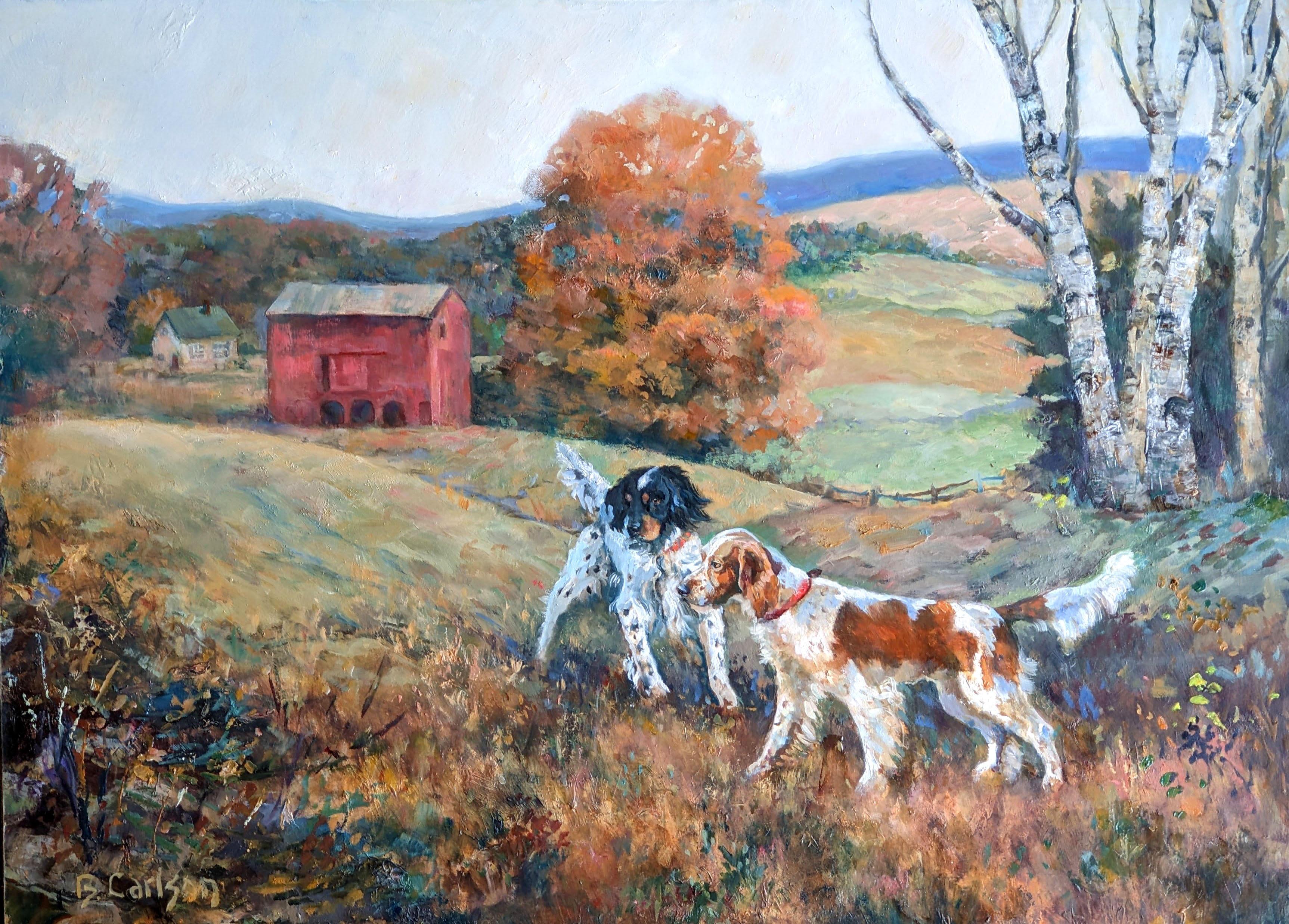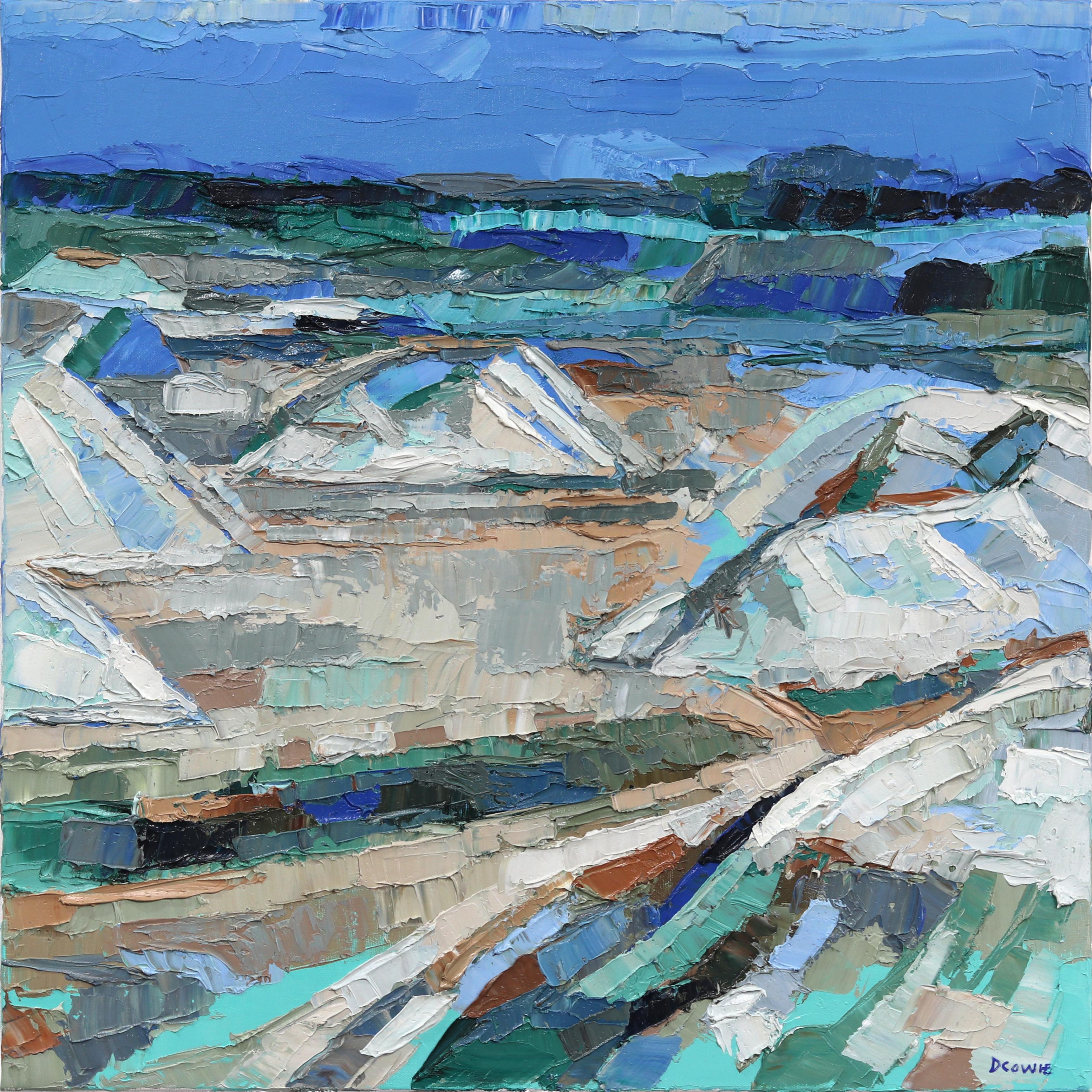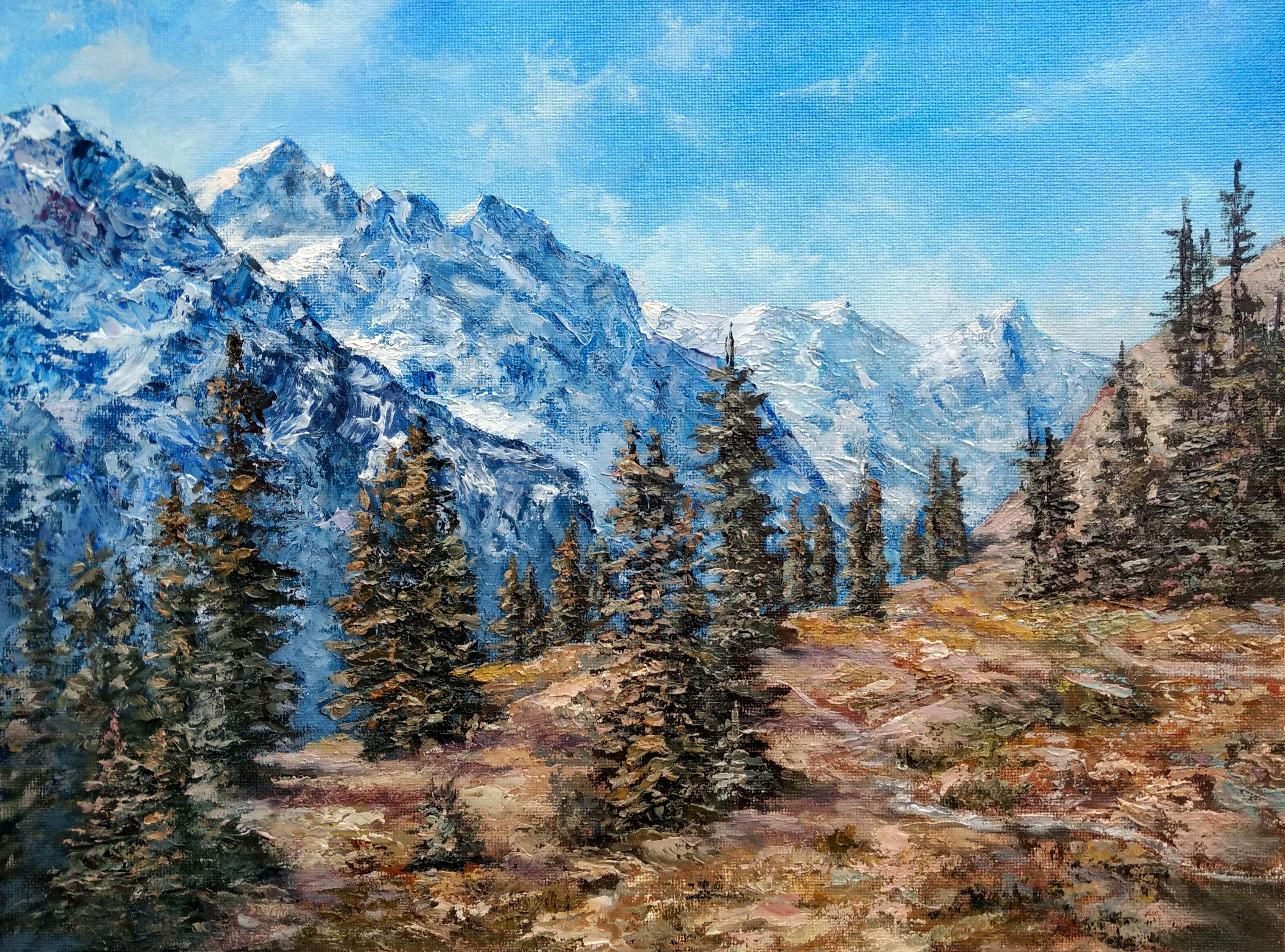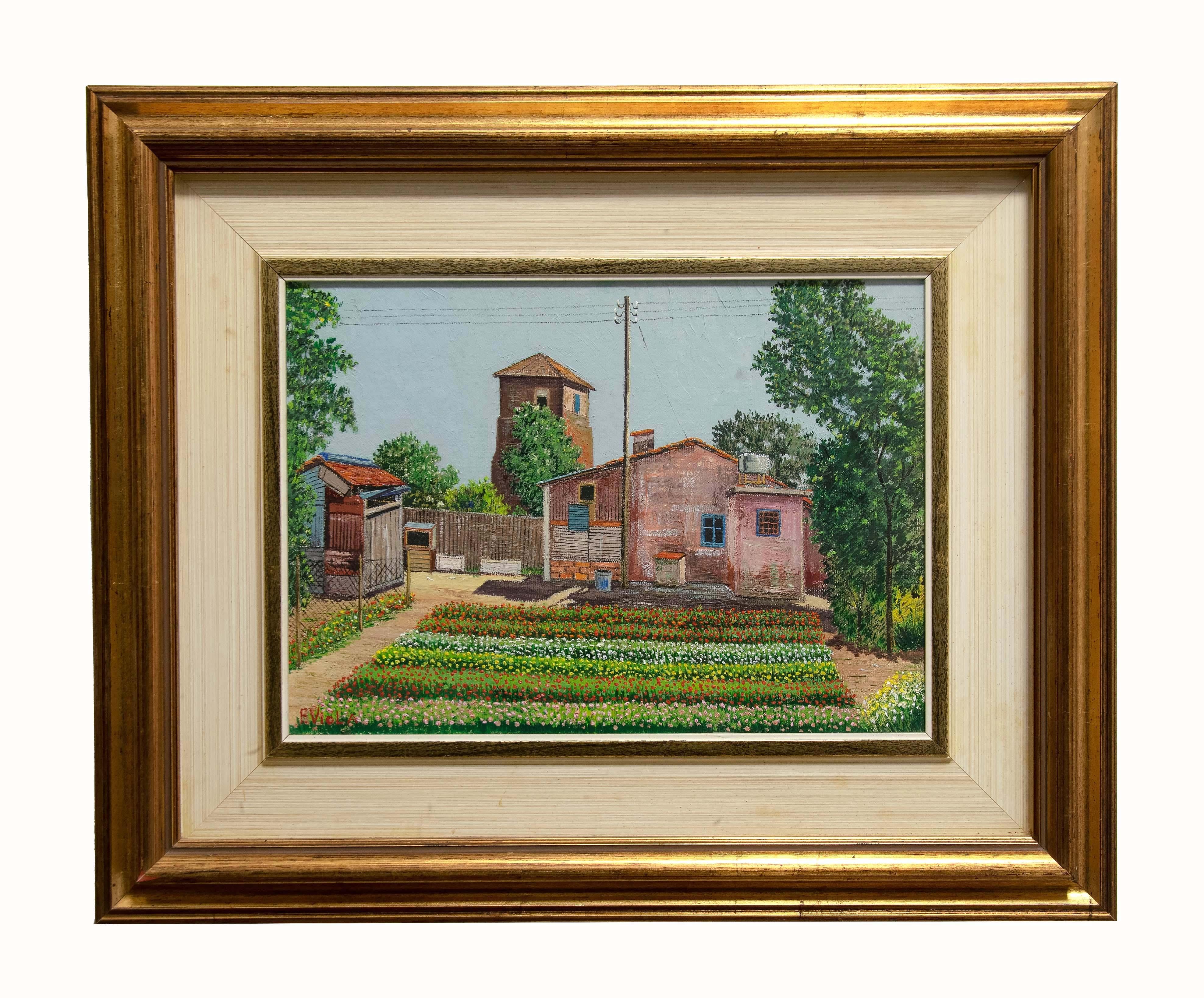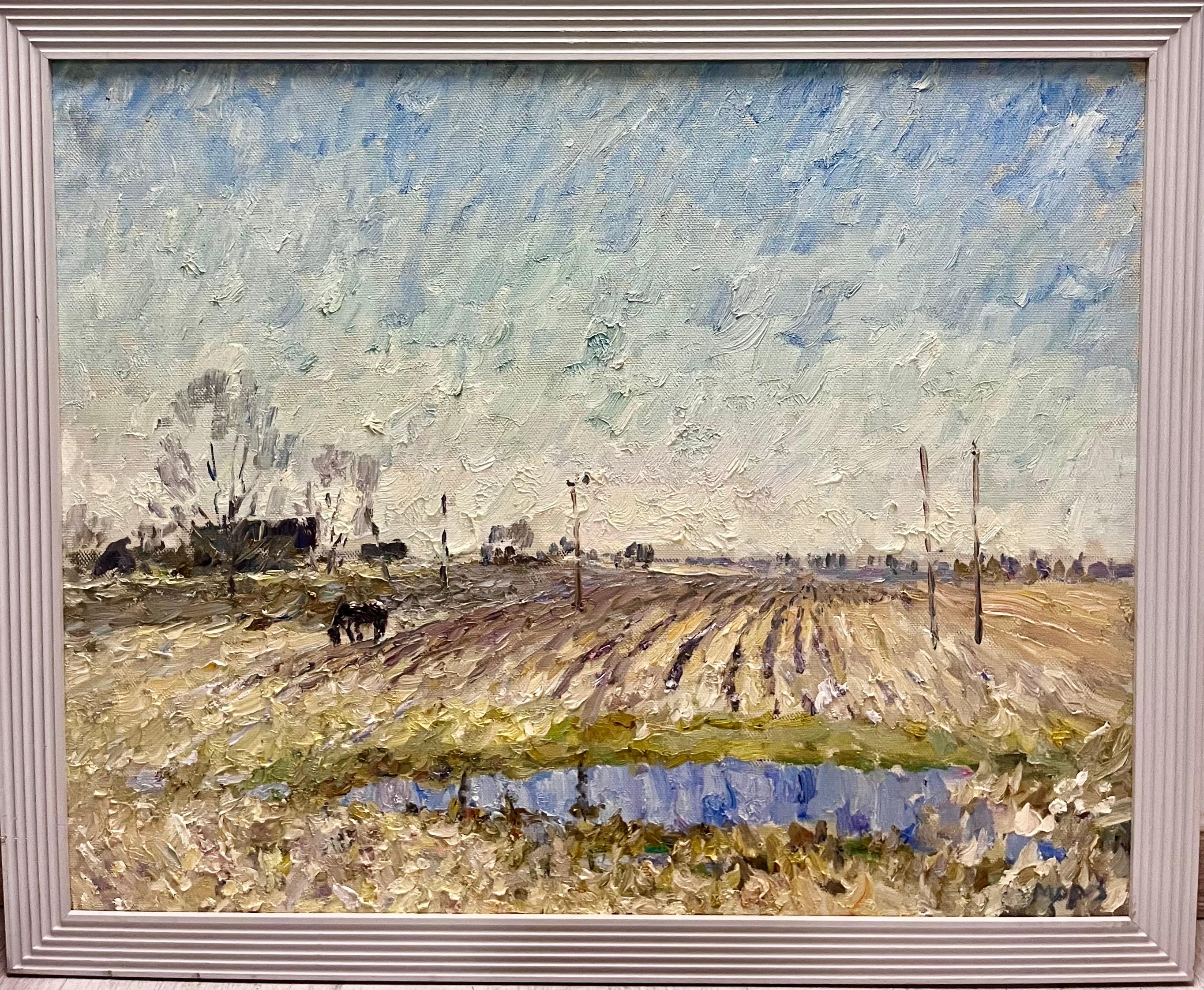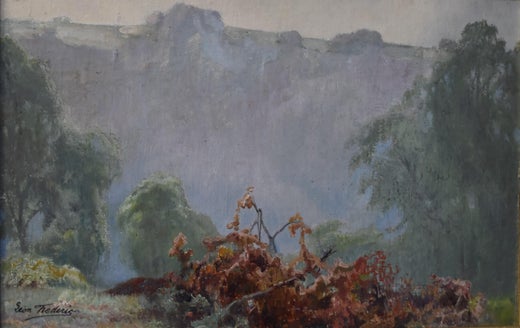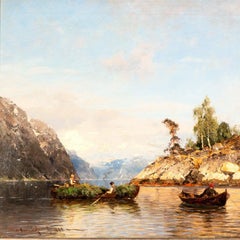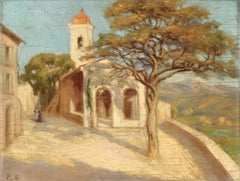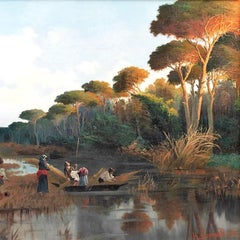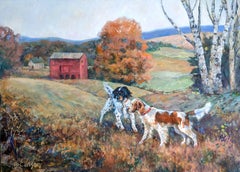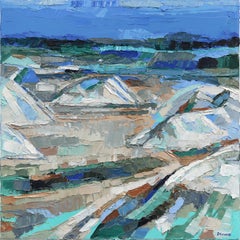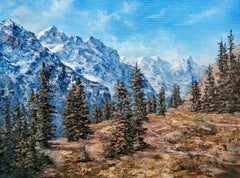Items Similar to Landscape at Nafraiture by Léon Frederic (1856 - 1940)
Want more images or videos?
Request additional images or videos from the seller
1 of 17
Léon FrédéricLandscape at Nafraiture by Léon Frederic (1856 - 1940)1883
1883
About the Item
Léon Frédéric was one of the greatest representatives of Belgian symbolism and realism. He was ennobled as a baron in 1929 by King Albert I.
Discovered in 1883 by Léon Frederic on the occasion of the marriage of a cousin to the former village teacher, the village of Nafraiture and the Ardennes undoubtedly caught the attention of the painter. Every year, for forty years, the artist stayed with the farmers, staying with Philomène Poncelet, the village shopkeeper. His rural daily life inspires his main works exhibited in art fairs throughout Europe.
It will be possible to observe that this interest in the rural world, far from being isolated, is shared by a good number of artists on the European scene, from the famous Paul Gauguin to the more discreet Georges Lebrun. Léon Frederic's journey in the Ardennes proves to be as sincere as it is thoughtful, resembling a clear positioning of the artist in the artistic field.
Léon Frédéric: Landscaper, painter of allegories, religious and social subjects.
On August 26, 1856, Léon Frédéric was born in Ghent. He was the son of a master jeweler who introduced him very early to the art of drawing and painting. At fifteen, he was apprenticed to Charle-Albert, a renowned painter-decorator. The teenager is then entrusted to Jules Van Keirsbilck with whom Frédéric trains his eye and strengthens his hand. He attended evening classes at the Royal Academy of Fine Arts in Brussels for seven years. During this time, he frequented the workshop of Jean-François Portaels. In 1875, he joined forces with young painters to rent a studio where they could study live models.
From 1876 to 1878, he prepared for the Prix de Rome in which he failed the eliminatory test. Nevertheless, his father offers him enough money to travel to Italy for a whole year. He then made a long trip in the company of the sculptor Julien Dillens to Venice, Florence, Naples, Rome. He also visited England, Germany and the Netherlands. The travels oriented his career in a decisive way: the influence of the Italian primitives then combined with that of their English imitators, the Pre-Raphaelites, and of Edward Burne-Jones in particular. The same year, he exhibited for the first time at the Brussels Salon and made his debut within the group l'Essor which brought together proponents of realism. In 1882, Léon Frédéric discovered the inspiring work of the French naturalist painter Jules Bastien Lepage. His art is the bizarre alliance of a mannered naturalism and the naivety and luxuriance of the Quattrocento and the Flemish Primitives, often executed in the form of triptychs. Frédéric's paintings frequently take the form of esoteric allegories. It is the poetry of misery, of resignation, of silent duty, of courage. If the themes of his painting are sometimes those of the French realists, his manner differs considerably: unusual lighting, harsh and discordant colors, meticulous drawing where the modeling is accentuated to the point of unusualness, busy compositions contribute to the opposite, to “derealize” his painting. These works are enough to classify him as one of the masters of the Belgian symbolist movement. They also announce certain surrealist themes.
In 1883, he accompanied his cousin to the Ardennes, to Nafraiture. Inspired by the region, he settled there for more than twenty years and reached the peak of his art by mixing idealism with reality. He is hailed as a painter brimming with promise with his painting The Chalk Merchants, a triptych uniting modernism with the genius of the primitive Masters. At the Salon of 1877, Léon Frédéric exhibited his polyptych The Ages of the Peasant, which caused the general astonishment of critics and the public; its bold and revolutionary conception opens the door to a new trend in Belgian painting. In 1899, he moved to Schaerbeek and participated in numerous international fairs and exhibitions as well as Idealist Art fairs. This is in no way incompatible with his social concerns: on the contrary, Frédéric's work is entirely characteristic of this utopian symbolism whose unrealism is only a form of protest against the state of contemporary society and a call for a better future. This is how we must interpret his great allegories, with their revealing titles: The people, one day, will see the sun or The Ages of the Worker. What is affirmed in the various works of Léon Frédéric is the sympathy he feels for the unfortunate, the disinherited by fate, the needy fighting against poverty, doomed to an obscure, undeserved, and therefore unjust, destiny. But if the red flag flies in the second of these paintings, Frédéric often prefers to take refuge in the more reassuring theme of motherhood or consoling nature. Nature is omnipresent in the production of this artist, both in his landscapes and in his social works, where he realistically depicts the life of the peasants of Flanders or the workers of the Ardennes.
- Creator:Léon Frédéric (1856 - 1940)
- Creation Year:1883
- Dimensions:Height: 20.48 in (52 cm)Width: 27.96 in (71 cm)Depth: 2.37 in (6 cm)
- More Editions & Sizes:52 x 71Price: $5,746
- Medium:
- Period:
- Condition:
- Gallery Location:Gent, BE
- Reference Number:1stDibs: LU2140213699362
Léon Frédéric
Léon Frédéric was a Belgian Symbolist painter. In 1883, he moved to Nafraiture in the Belgian Ardennes. He painted the valley of Nafraiture several times, making it one of his principal themes of creation. In 1929, Frédéric created a Baron and Knight on the order of King Leopold. His works are present in several Museums, including Musée d'Orsay in Paris, Museums of Art and History in Brussels and at the Philadelphia Museum of Art.
About the Seller
5.0
Vetted Professional Seller
Every seller passes strict standards for authenticity and reliability
Established in 2018
1stDibs seller since 2022
- ShippingRetrieving quote...Shipping from: Gent, Belgium
- Return Policy
Authenticity Guarantee
In the unlikely event there’s an issue with an item’s authenticity, contact us within 1 year for a full refund. DetailsMoney-Back Guarantee
If your item is not as described, is damaged in transit, or does not arrive, contact us within 7 days for a full refund. Details24-Hour Cancellation
You have a 24-hour grace period in which to reconsider your purchase, with no questions asked.Vetted Professional Sellers
Our world-class sellers must adhere to strict standards for service and quality, maintaining the integrity of our listings.Price-Match Guarantee
If you find that a seller listed the same item for a lower price elsewhere, we’ll match it.Trusted Global Delivery
Our best-in-class carrier network provides specialized shipping options worldwide, including custom delivery.More From This Seller
View AllPaul-Édouard Crébassa (1864-1912) - River with water lillies
Located in Gent, VOV
Paul-Édouard Crébassa’s painting is a beautiful example of post-impressionist art, showcasing his ability to blend detailed observation with expressive techniques to capture the ephe...
Category
19th Century Landscape Paintings
Materials
Oil
Summer in the fjords, Oil on canvas by Georg Anton Rasmussen, 1842 - 1912
By Georg Anton Rasmussen
Located in Gent, VOV
Georg Anton Rasmussen (August 7, 1842, Stavanger - October 23, 1914, Berlin) was a Norwegian landscape painter who spent most of his career in Germany.
He began his artistic training in Bergen, where he studied with Johan Ludvig Losting and Anders Askevold. In 1863, he moved to Copenhagen to study with Frederik Rohde [de] at the Royal Danish Academy of Fine Arts. From 1864 to 1867, he completed his studies at the Kunstakademie in Düsseldorf with Oswald Achenbach, and was influenced by the works of Hans...
Category
20th Century Landscape Paintings
Materials
Canvas, Oil
The Chapel Of Protection In Cagnes
By Paul Leduc
Located in Gent, VOV
La Chapelle de la Protection in Cagnes, circa 1925 Oil on panel, signed with the monogram lower left 27 x 34.5 cm Bibliography: The Painters of Cagnes, exhibition catalogue, Château-Musée Grimaldi, 2011, p.62
Paul Leduc...
Category
1920s Impressionist Landscape Paintings
Materials
Oil, Panel
River scene at sunset with figures gathering reeds
By Hermann Corrodi
Located in Gent, VOV
LEGNAIOLI SUL TEVERE - RIVER SCENE WITH FIGURE GATHERING REEDS
Oil on canvas: 30 1/2 x 38 1/2 in., 36 x 44 1/2 in. (framed)
Framed; lower right signed and dated: H. Corrodi, 1892
Category
1890s Italian School Landscape Paintings
Materials
Oil
Oil on canvas : Cattle near the cliffs of Herne Bay KENT by Thomas Syndey Cooper
By Thomas Sidney Cooper
Located in Gent, VOV
Thomas Sidney Cooper was one of the foremost animal painters of the Victorian period. He was born in Canterbury, Kent, and as a small child he began to show strong artistic inclinations, but the circumstances of his family did not allow him to receive any systematic training. By the time he was twelve years old, he was working in the shop of a coach painter. Later he obtained a job as a scene painter, and he alternated between these two occupations for about eight years. He still felt a strong desire to become an artist, and all his spare moments were spent drawing and painting from nature. At the age of twenty, he went to London, drew for a while in the British Museum, and was admitted as a student of the Royal Academy. Subsequently, he returned to Canterbury, where he was able to earn a living as a drawing master and by the sale of sketches and drawings.
In 1827, he settled in Brussels and married before taking up a position as a teacher in Brussels in 1829. There he befriended Eugène Joseph Verboeckhoven, the great Belgian animal painter, who greatly influenced his style. He was also influenced by the 17th Century Dutch School. Because of the Belgian Revolution, he returned to London where he settled and first exhibited at Suffolk Street in 1833. He exhibited forty-eight pictures at the British Institution between 1833 and 1863. ‘Landscape and Cattle’, Royal Academy 1833, was shown until 1902 without a break - a record for a continuous exhibit at the Royal Academy. Sheep and cattle were his most frequent subjects, although he did paint a few figurative subjects. Cooper collaborated between 1847 and 1870 with Frederick Richard Lee...
Category
1880s Realist Landscape Paintings
Materials
Canvas, Oil
Thomas Sidney CooperOil on canvas : Cattle near the cliffs of Herne Bay KENT by Thomas Syndey Cooper
$22,287 Sale Price
20% Off
Vue d'un sous bois, tableau daté 1901, huile sur toile de Feodor Petrovich Rizni
Located in Gent, VOV
View of an undergrowth, 1901
Dimensions: 49 x 80 cm (unframed)
Oil on canvas
Signed lower left and dated
Fedor Petrovich Riznichenko - Russian and Ukrainian landscape painter, was ...
Category
20th Century Landscape Paintings
Materials
Canvas, Oil
You May Also Like
Dynamic Sporting Outdoor Landscape with Expressive Setters on Point, framed
By Beth Carlson
Located in Charleston, US
This dynamic sporting landscape in earth tones with English Setters flushing quail, "Setters on Point", by Beth Carlson is an example of her exciting paintings. In this special sport...
Category
2010s Realist Animal Paintings
Materials
Oil
Quarry Landscape - Original Impasto Abstract Blue Grey Beige Painting
By Dana Cowie
Located in Los Angeles, CA
Using an impasto, painterly technique Dana Cowie creates cubist-inspired farm and rural landscapes. Working within controlled color schemes, her artworks appear abstract up close and...
Category
2010s Abstract Landscape Paintings
Materials
Canvas, Oil
Oil on Canvas -- Nearing Port
By Gary Masline
Located in Troy, NY
In this oil on canvas painting, the horizon shows where the breaking waves and sunset appear to meet. A small strip of land appears most noticeably on the left, darker than the shimm...
Category
2010s Contemporary Landscape Paintings
Materials
Canvas, Oil
Snow peaks - Oil Painting Landscape with Mountain Valley
Located in Zofingen, AG
Sunday hikes are a cherished tradition when you live in a mountainous region. The trail may be challenging, but the reward is worth it— the chance to take in the sight of snow-capped...
Category
2010s Impressionist Landscape Paintings
Materials
Canvas, Oil
Rustic Cottage - Oil on Plywood by Franco Viola - 1980
Located in Roma, IT
Rustic Cottage is an original painting, realized in 1980 by Franco Viola.
Mixed colored painting on plywood.
Hand signed by the artist on the lower left...
Category
1980s Figurative Paintings
Materials
Plywood, Oil
"Paesaggio di campagna" Olio cm. 92 x 74
By Georgij Moroz
Located in Torino, IT
Luminoso paesaggio di campagna con campi e cavallo
Georgij MOROZ (Dneprodzerzinsk, Ucraina 1937 – San Pietroburgo 2015)
Nato a Dneprodzerzinsk, in Ucraina, nel 1937, inizia gli stu...
Category
Early 2000s Post-Impressionist Landscape Paintings
Materials
Oil
Recently Viewed
View AllMore Ways To Browse
Leon Paul
Field Worker Painting
Italian Painting Peasants
Netherlands Painting Early 20th Century
Peasant Field Painting
The Red Sun Called
Flag Day Vintage
Flanders Oil Painting
German Baron
Van Jones
George Frederic
Paintings Oil Edward Farmer
Oil Painting Field Workers
Red Baron
Venice Flag
Religious Triptych
Bastien Lepage
Primitive English Painting
